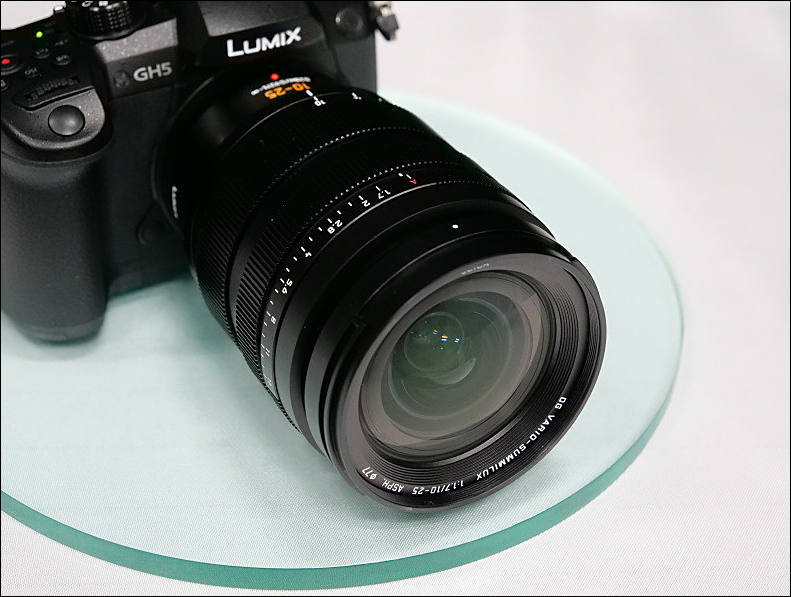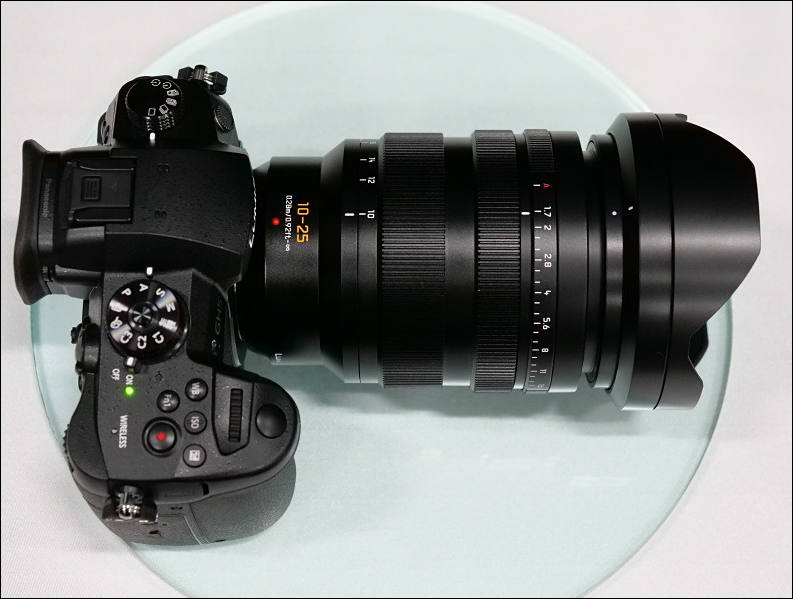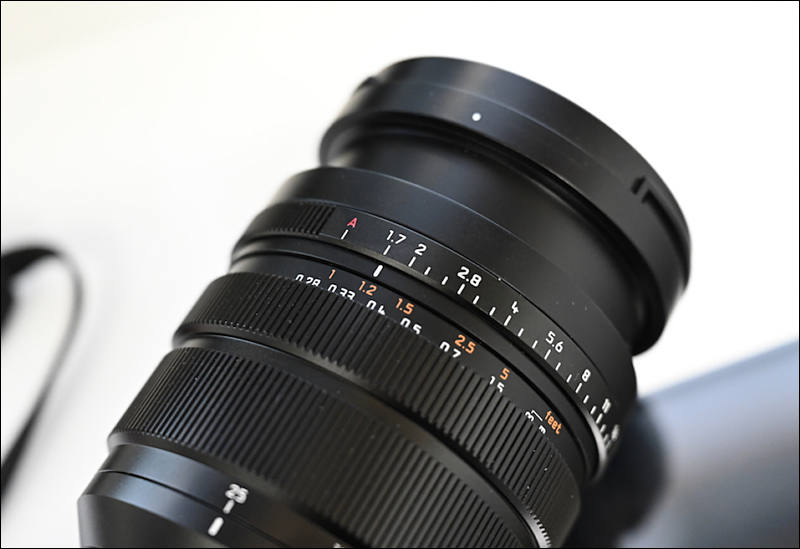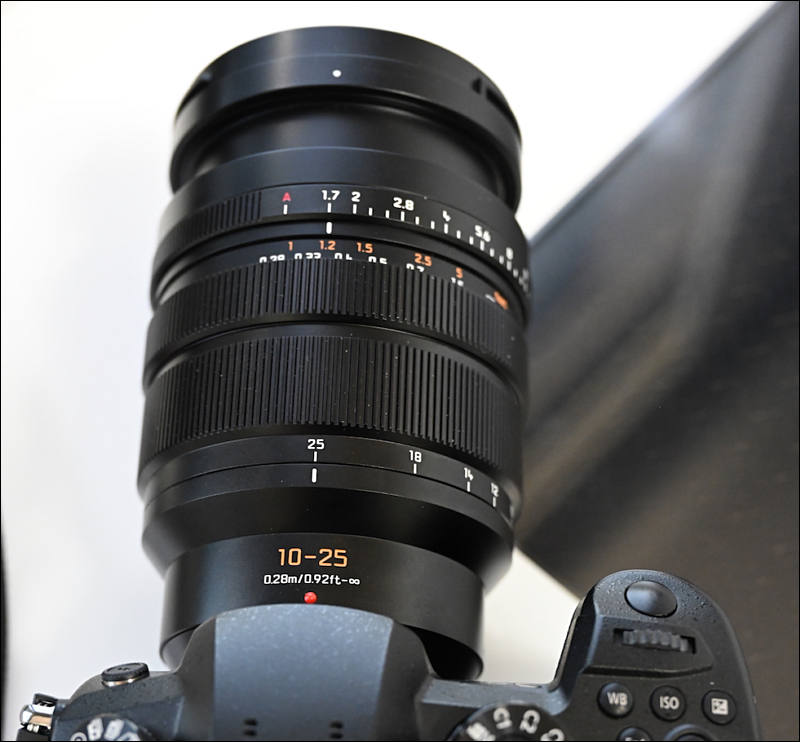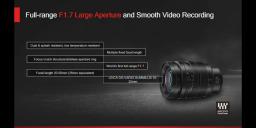
It allows to keep PV going, with more focus towards AI, but keeping be one of the few truly independent places.
-

 sa8622.jpg800 x 555 - 54K
sa8622.jpg800 x 555 - 54K -
Video is present above.
-
Looking at the m43 lenses prices trend I think you can have small hope to get such for around $4999.
-
They do not have anything about it in PR, so I guess not and by far.
-
Panasonic is proud to introduce a new standard zoom digital interchangeable lens, the LEICA DG VARIO-SUMMILUX 10-25mm / F1.7 ASPH.
(H-X1025), which boasts a large F1.7 aperture throughout the entire 20-50mm (35mm camera equivalent) zoom range and exceptionally high optical performance, clearing the stringent LEICA standards. The LEICA DG VARIO-SUMMILUX 10-25mm / F1.7 ASPH. is suitable not only for stills shooting, but also for video recording, to satisfy both professional photographers and videographers.
The full-range F1.7 ASPH. high-speed aperture provides beautiful bokeh and high descriptiveness. Covering a focusing distance from wide angle to standard zoom range, the LEICA DG VARIO-SUMMILUX 10-25mm / F1.7 ASPH. functions as a multiple fixed focal-length lens, providing the same or higher level of descriptiveness than a fixed focal-length lens can offer. It is suitable for a variety of daily shooting situations, from dynamic landscapes to portraits--even in low-lit scenes-- eliminating the need to change lenses between variations in environment.
Comprising 17 elements in 12 groups, the lens system features three aspherical lenses and four ED (Extra-low Dispersion) lenses that effectively suppress the axial chromatic aberration and chromatic aberration of magnification. Spherical aberration and distortion are also corrected by the aspherical lenses for stunningly high resolution. The use of aspherical lenses coupled with the optimum design of the lens system, results in a compact size and light weight, while maintaining its outstanding optical performance.
Compatibility with a maximum 240-fps high-speed sensor drive realizes high-speed and high-precision auto focusing. Notably, the new lens excels in video recording performance. In addition to the silent operation achieved by the inner focus drive system, the stepless aperture ring and micro-step drive system in the aperture control section help the camera smoothly catch up to brightness changes when zooming or panning. The optical design achieves exceptional barycentric stability to minimize image shifts during zooming. Adoption of a focus clutch mechanism enables instant AF/MF switching and accurate manual focusing. The LEICA DG VARIO-SUMMILUX 10-25mm / F1.7 ASPH. also excels in video recording performance with a mechanism that suppresses focus breathing, which was previously a fatal problem of all interchangeable lenses designed for still image photography.
The rugged dust/splash-resistant* design withstands use under harsh conditions even at -10 degrees Centigrade for high mobility. Nine blades give the aperture a rounded shape that produces an attractively smooth defocus effect in out-of-focus areas when shooting at larger aperture settings. Filter diameter is in 77mm. A highly reliable metal mount endures long time use.
Panasonic is committed to expanding the of Micro Four Thirds lineup through its LUMIX G series of cameras and lenses.
Dust and Splash Resistant does not guarantee that damage will not occur if this lens is subjected to direct contact with dust and water.
Design and specifications are subject to change without notice.
-
Rumored price is $1,798, or 1999 Euro or 233,280 yen including tax, shipping since August 22.
-
Specs
- 17 elements in 12 groups (3 aspherical lenses, 4 ED lenses, 1 UHR lens)
- 9 diaphragm blades / Circular aperture diaphragm
- Maximum aperture: F1.7
- Minimum aperture: F16
- Min focusing distance: 0.28m / 0.92′
- Maximum magnification: Approx. 0.14x / 0.28x (35mm camera equivalent)
- Dust and splash resistant
- Recommended operating temperature: -10°C to 40°C (14°F to 104°F)
- Filters -77mm
- Maximum diameter: 87.6mm / 3.45″
- Overall length: Approx. 128mm / 5.04″ (from the tip of the lens to the base side of the lens mount)
- Weight: Approx. 690g / 24.34oz (excluding lens cap, lens rear cap and lens hood)
- $1797
-
Panasonic Leica DG Vario-Summilux 10-25mm f/1.7 Lens -- H-X1025
LEICA DG VARIO-SUMMILUX 10-25mm / F1.7 ASPH. H-X1025 from Panasonic is built for mirrorless Micro Four Thirds mount cameras and enables F1.7 aperture brightness throughout the entire 20-50mm (35mm camera equivalent) zoom range with exceptionally high optical performance clearing the stringent LEICA standards. Suitable not only for photo shooting but also for video recording to satisfy both professional photographers and videographers.
LEICA DG VARIO-SUMMILUX
LEICA Camera AG's strict quality standards optimized for photo/video has been developed into this ruggedized mirrorless Micro Four Thirds mount lens.
F1.7 Full Range
F1.7 high-speed aperture brightness is available across the entire zoom range of 10-25mm (35mm camera equivalent of 20-50mm).
Lens System
Comprising 17 elements in 12 groups, the lens system features three aspherical lenses and four ED (Extra-low Dispersion) lenses that effectively suppress the axial chromatic aberration and chromatic aberration of magnification. Spherical aberration and distortion are also corrected by the aspherical lenses for stunningly high resolution. The use of aspherical lenses and the optimum design of the lens system results in a compact size and light weight despite its outstanding optical performance.
Performance
Compatibility with a maximum 240-fps high-speed sensor drive realizes high-speed, high-precision autofocusing. Notably, the new lens excels in video recording performance. In addition to the silent operation achieved by the inner focus drive system, the stepless "de-clicked" aperture ring and micro-step drive system in the aperture control section help the camera to smoothly catch up to brightness changes when zooming or panning. The optical design achieves exceptional barycentric stability to minimize image shifts during zooming. Adoption of a focus clutch mechanism enables instant AF/MF switching and accurate manual focusing. The lens also excels in video recording performance with a mechanism that suppresses focus breathing, which was a fatal problem of all interchangeable lenses designed for still image photography.
-
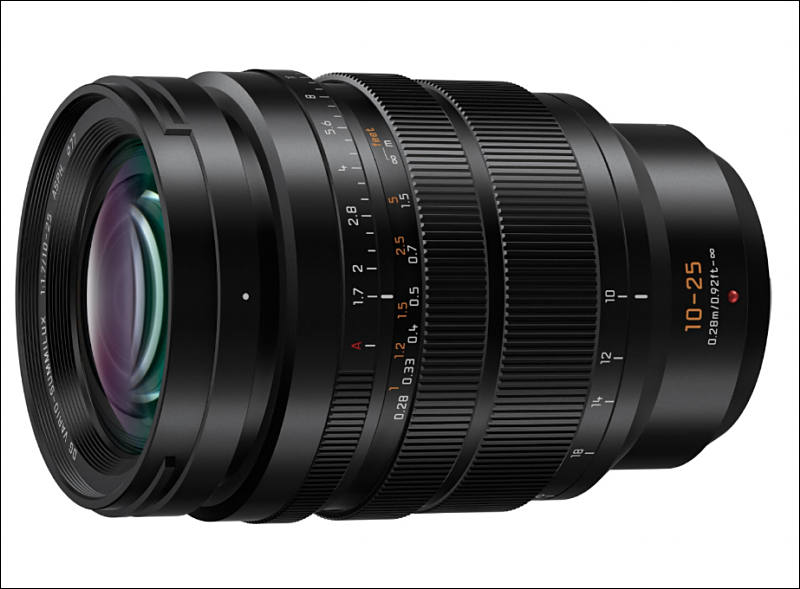
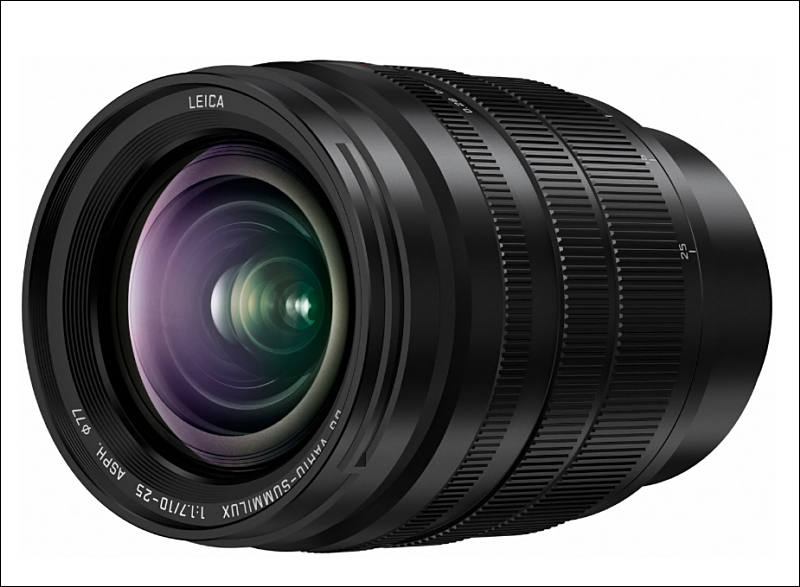
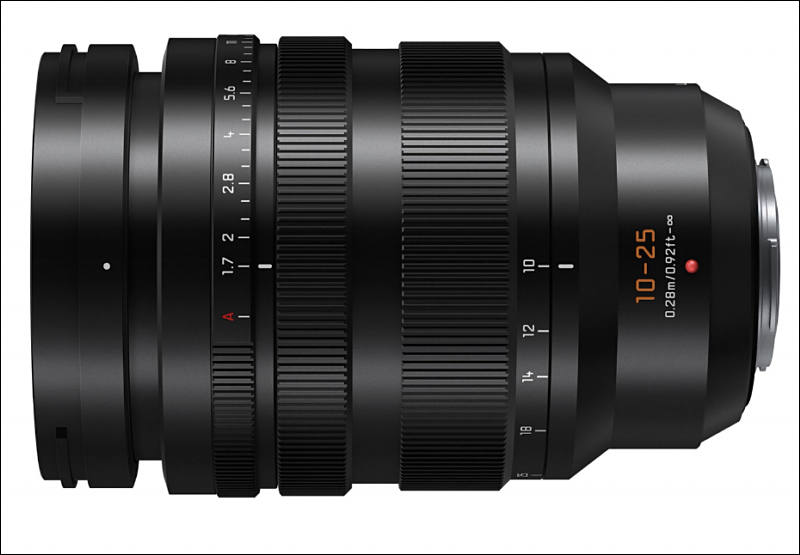

 sa8432.jpg800 x 589 - 53K
sa8432.jpg800 x 589 - 53K
 sa8434.jpg800 x 587 - 56K
sa8434.jpg800 x 587 - 56K
 sa8433.jpg800 x 555 - 45K
sa8433.jpg800 x 555 - 45K -
When you compare it to a full frame equivalent this becomes a 20-50mm f 2.89, which is great for micro 4/3's and it doesn't really get better than that for native full frame lens speed wise, though you can get wider with the Sigma 14-24mm f/2.8 ($1,299) for slightly more than half the price or the Canon EF 16-35mm f/2.8L III ($1,899 on sale) for less money as well if you shoot full frame.
It seems a bit over priced and should sell for no more than $1799 IMHO, but they can always price it high at $2300 and discounted when it doesn't sell as they had hoped - it's probably their plan all along.
A Sigma 18-35mm with a speed booster is looking better all the time.
-
There's no IS on/off switch in the pictures.
Even weirder, there's no AF on/off switch. Come on, Panasonic. $2500 and you can't even add an physical switch for AF (unless they are going the Olympus route and engaging MF by pulling the focus ring backward which would be a dream come true).
Edit: Just noticed in the pictures that they are doing that since in some, there is a distance scale and others there isn't. Even better, the presence of a distance scale implies that they are finally doing linear focus-by-wire instead of what all of their current lenses do.
-
Do not see any mention of OIS.
Also you wrongly understand logic now. The bigger the price - the better.
I am sure in 1-2 year we will see $5000-10000 consumer lenses from all major companies. Initially they will be called something like "special limited pro line", but in the future will be common.
Some part of society are fast becoming very rich. Owning expensive photo gear is one of their hobbies.
-
You can get Sigma 18-35mm f/1.8 for $799, plus Viltrox speed booster and you get similar focal length and and wider aperture for less than half of the price. The only advantage is better auto focus, but autofocus on mft cameras is not good mostly. And maybe OIS, will it have OIS?
-
As I recall, the announcement is expected in August-September 2019. It will be quite an expensive glass, because it is unique. We expect the price to be at the level of 160,000 rubles, but probably also cheaper. In fact, by purchasing one lens, the videographer gets all the main focal lengths to which he is used. 10-25mm – in the full frame it is 20-50mm. The lens was developed in conjunction with LEICA.
$2300 mft lens. I am not sure if Panasonic management will survive future revolution. Most probably not.
-
That is a big piece of glass! USD3000?
Howdy, Stranger!
It looks like you're new here. If you want to get involved, click one of these buttons!
Categories
- Topics List23,992
- Blog5,725
- General and News1,354
- Hacks and Patches1,153
- ↳ Top Settings33
- ↳ Beginners256
- ↳ Archives402
- ↳ Hacks News and Development56
- Cameras2,367
- ↳ Panasonic995
- ↳ Canon118
- ↳ Sony156
- ↳ Nikon96
- ↳ Pentax and Samsung70
- ↳ Olympus and Fujifilm101
- ↳ Compacts and Camcorders300
- ↳ Smartphones for video97
- ↳ Pro Video Cameras191
- ↳ BlackMagic and other raw cameras116
- Skill1,960
- ↳ Business and distribution66
- ↳ Preparation, scripts and legal38
- ↳ Art149
- ↳ Import, Convert, Exporting291
- ↳ Editors191
- ↳ Effects and stunts115
- ↳ Color grading197
- ↳ Sound and Music280
- ↳ Lighting96
- ↳ Software and storage tips266
- Gear5,420
- ↳ Filters, Adapters, Matte boxes344
- ↳ Lenses1,582
- ↳ Follow focus and gears93
- ↳ Sound499
- ↳ Lighting gear314
- ↳ Camera movement230
- ↳ Gimbals and copters302
- ↳ Rigs and related stuff273
- ↳ Power solutions83
- ↳ Monitors and viewfinders340
- ↳ Tripods and fluid heads139
- ↳ Storage286
- ↳ Computers and studio gear560
- ↳ VR and 3D248
- Showcase1,859
- Marketplace2,834
- Offtopic1,320


